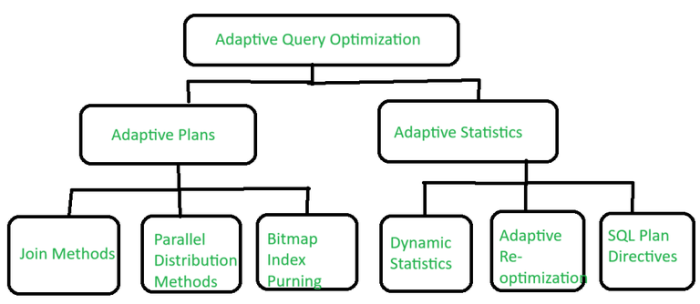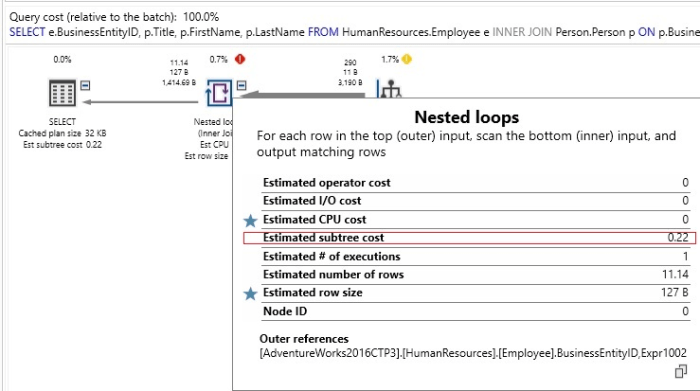What are the common database query optimization techniques? This essential inquiry uncovers the pivotal practices that can dramatically enhance database performance. In a world where data drives decisions, optimizing database queries is not just a technical requirement but a strategic advantage. With unoptimized queries leading to sluggish response times and increased costs, understanding and implementing effective optimization techniques is critical for developers and businesses alike.
From indexing strategies that speed up search times to crafting efficient SQL queries, every detail counts. As we explore various optimization methods, we will illuminate how even minor adjustments can yield significant improvements in performance, ensuring that databases operate at their best.
Introduction to Database Query Optimization

Database query optimization plays a vital role in enhancing the performance of database systems. In an era where data-driven decision-making is key to business success, the ability to efficiently retrieve and manage data is paramount. When queries are optimized, they execute faster and use fewer resources, which leads to improved application responsiveness and a better user experience. Common database optimization techniques include indexing, query rewriting, the use of stored procedures, and partitioning.
Each technique addresses different aspects of query performance, allowing developers and database administrators to fine-tune their systems for optimal efficiency. On the other hand, unoptimized queries can lead to significant performance degradation, causing slower response times and higher resource consumption, which can ultimately result in user frustration and increased operational costs.
Common Database Optimization Techniques
Understanding the various techniques for database query optimization is essential for any developer or database administrator aiming to create efficient systems. Each technique serves a specific purpose, contributing to overall performance improvements.
- Indexing: Indexes are data structures that improve the speed of data retrieval operations. By creating indexes on frequently queried columns, databases can quickly locate the required data without scanning the entire table.
- Query Rewriting: This technique involves modifying queries for better performance. Simplifying complex queries and removing unnecessary joins can help reduce execution time.
- Stored Procedures: Utilizing stored procedures allows for the encapsulation of complex logic within the database. This reduces the amount of data sent over the network and enhances execution speed.
- Partitioning: Dividing large tables into smaller, more manageable pieces, or partitions, can lead to improved query performance by allowing faster access to relevant sections of the data.
The impact of unoptimized queries can be profound. A poorly constructed query can lead to excessive CPU usage, increased memory consumption, and longer wait times for users. These factors not only degrade the performance of the database but can also hinder the overall effectiveness of applications reliant on that data. For instance, a retail company experiencing slow response times on their product search due to unoptimized queries may face significant revenue losses during peak shopping periods.
To enhance decision-making processes in your business, learning how to analyze data for business intelligence decisions is essential. This enables organizations to effectively utilize their data, leading to actionable insights. By leveraging analytical tools and techniques, businesses can identify patterns and trends that drive strategic decisions, ultimately improving operational efficiency and market positioning.
“The efficiency of a database system is only as strong as the queries that interact with it.”
Indexing Strategies: What Are The Common Database Query Optimization Techniques

Indexes play a crucial role in enhancing the performance of database queries by providing a structured way to quickly locate and access data. They serve as a look-up table that allows the database engine to bypass scanning entire tables, thus dramatically reducing query execution time. Understanding the various indexing strategies is essential for database administrators and developers seeking to optimize their applications.Indexes can be conceptualized as data structures that improve the speed of data retrieval operations on a database table.
There are several types of indexes, each offering unique advantages and suitable for different use cases. The choice of index type can significantly impact query performance, and knowing when to apply each type can be a game-changer in database management.
B-tree Indexes
B-tree indexes are the most commonly used indexing type due to their balanced structure, which allows for efficient searching, sequential access, insertion, and deletion of records. They are particularly effective for range queries and support partial matches. B-tree indexes maintain a balanced tree structure, which ensures that the depth of the tree remains logarithmic in relation to the number of entries, thereby guaranteeing consistent performance.
Hash Indexes
Hash indexes, on the other hand, use a hash function to compute a hash key for each indexed value. This type of index is extremely efficient for equality comparisons but does not support range queries. Hash indexes can lead to faster lookups for specific values, making them an excellent choice when the application primarily requires equality searches. However, their limitation in handling range queries should be carefully considered.
Full-Text Indexes
Full-text indexes are designed specifically for searching large text bodies. They allow for more advanced queries like natural language searches and can handle word variations efficiently. This type of index breaks down text into tokens and builds an index based on those tokens. It is particularly useful for applications that require searching through large volumes of unstructured data, such as documents and articles, where conventional indexing methods fall short.
Best Practices for Creating and Managing Indexes, What are the common database query optimization techniques
When creating and managing indexes, adhering to best practices can lead to significant performance gains. The following practices should be considered:
Choose the Right Type of Index
Understanding the nature of the queries and data can guide the selection of the appropriate index type.
Limit the Number of Indexes
Excessive indexing can lead to increased write times, as every insert, update, or delete operation must also update the indexes.
Monitor Index Usage
Periodically review index performance and usage statistics to identify unused or underutilized indexes that can be removed.
Implement Composite Indexes
For queries that filter on multiple columns, composite indexes can improve performance by allowing the database to utilize a single index for multiple conditions.
Rebuild and Reorganize Indexes
Regular maintenance tasks such as rebuilding fragmented indexes can enhance efficiency and should be scheduled based on database activity.
“Effective indexing strategies are essential for optimizing query performance and ensuring efficient data retrieval.”
By understanding the different indexing strategies and implementing best practices, database administrators can significantly enhance query performance, leading to improved application responsiveness and user satisfaction.
Query Structure Optimization
Optimizing query structure is crucial for enhancing the performance of database queries. Efficient SQL queries not only reduce execution time but also minimize resource consumption, leading to improved overall system performance. By focusing on the structure of queries, developers can write more efficient SQL statements that align with best practices in database management.Writing efficient SQL queries involves several best practices and techniques.
The goal is to structure queries in a way that reduces complexity and promotes faster execution. One key aspect is to avoid subqueries when possible, as they can be less efficient than joins. Instead, utilizing SQL joins can lead to improved performance and clarity.
Successful business intelligence relies on the identification of key metrics for measuring business intelligence success. These metrics serve as benchmarks, helping organizations evaluate their performance and the impact of their strategies. By focusing on relevant indicators, businesses can optimize their operations and ensure they are on track to meet their objectives and improve overall performance.
Techniques for Writing Efficient SQL Queries
In order to write efficient SQL queries, developers should consider the following techniques:
- Use Joins Instead of Subqueries: Subqueries can often lead to multiple executions of the inner query for each row processed by the outer query. Joins, on the other hand, retrieve all required data in a single operation. For example, instead of using a subquery to find orders for a specific customer, a join can efficiently combine customer and order tables.
- Select Only Required Columns: Avoid using `SELECT
-` as it retrieves all columns, potentially including unnecessary data. Instead, specify only the columns needed for the query. For example, use `SELECT customer_name, order_date FROM orders` instead of `SELECT
– FROM orders`. - Filter Early: Apply filtering conditions as early as possible in the query. This can be achieved by placing `WHERE` clauses strategically to limit the dataset before performing joins or aggregations.
- Avoid Functions in WHERE Clauses: Using functions in the `WHERE` clause can lead to performance issues because it may prevent the database from using indexes effectively. For example, instead of `WHERE YEAR(order_date) = 2023`, it’s better to use date range filtering like `WHERE order_date BETWEEN ‘2023-01-01’ AND ‘2023-12-31’`.
- Use Indexes Wisely: While indexes greatly enhance performance, too many can degrade write operations. Therefore, it’s vital to assess the queries frequently executed and index the columns used in joins and where clauses.
Rewriting queries for better performance can often be achieved through practical examples. For instance:
A subquery that retrieves the total sales for a specific customer may look like this
“`sql SELECT customer_id, (SELECT SUM(sale_amount) FROM sales WHERE customer_id = customers.id) AS total_sales FROM customers; “` This can be optimized using a join: “`sql SELECT customers.id, SUM(sales.sale_amount) AS total_sales FROM customers LEFT JOIN sales ON customers.id = sales.customer_id GROUP BY customers.id; “`By employing these techniques, developers can significantly improve the performance of their SQL queries, leading to faster data retrieval and enhanced application responsiveness.
Database Configuration and Hardware Considerations
Database configuration settings and hardware choices play a pivotal role in determining the performance and efficiency of database systems. Properly optimized configurations can significantly enhance query speeds, reduce latency, and improve overall system reliability. Understanding the interplay between these factors is essential for database administrators seeking to achieve optimal performance.Database configuration settings involve parameters that define how a database management system (DBMS) operates.
Adjusting these settings can lead to improved resource allocation, better concurrency management, and enhanced data retrieval times. Hardware factors also greatly influence query performance, with aspects such as memory, CPU, and storage types being critical considerations for database setups.
Importance of Database Configuration Settings
Optimizing database configuration settings is crucial for maximizing performance. Parameters such as buffer sizes, connection limits, and caching strategies directly impact how efficiently a DBMS processes queries. Each setting can be tuned to match the workload characteristics of the application, which can lead to significant performance gains. For example, increasing the size of the buffer pool allows more data to be cached in memory, reducing the need for disk I/O operations.Key configuration settings that can improve database performance include:
- Memory Allocation: Ensure that memory settings, such as the buffer pool size, are configured to optimize data retrieval and transaction processing.
- Connection Pooling: Adjust connection limits to manage concurrent access effectively, minimizing overhead from establishing new connections.
- Query Cache: Implementing a query cache can drastically reduce the time required to execute frequently run queries by storing results in memory.
- Transaction Isolation Levels: Choosing the right isolation level can help balance data integrity and system performance depending on application requirements.
Hardware Factors Influencing Query Performance
The hardware on which a database runs has a direct impact on its performance. Key factors to consider include:
- Memory: Sufficient RAM is essential for database operations, as it allows for larger in-memory caches and faster query execution. More memory reduces disk reads, which significantly improves performance.
- CPU: The processing power of the CPU affects how quickly queries can be parsed and executed. Multi-core processors can handle parallel query executions more efficiently, particularly in systems with high concurrency.
- Storage Type: The choice of storage (HDD vs. SSD) affects data access speeds. SSDs provide much faster read and write times compared to traditional hard drives, leading to improved database performance.
- Network Latency: In distributed database environments, network speed and latency can affect query response times. Selecting high-speed networking equipment and optimizing configurations can mitigate these issues.
Guidelines for Optimizing Database Server Environments
Optimizing the database server environment involves both hardware and configuration strategies that ensure maximum efficiency. Implement the following guidelines to enhance database performance:
- Regularly Monitor Performance: Use monitoring tools to track performance metrics such as query response times, CPU usage, and memory consumption. This data helps identify bottlenecks.
- Scale Resources Appropriately: Be prepared to scale hardware resources based on workload demands. Consider vertical scaling (upgrading existing hardware) or horizontal scaling (adding more machines) as needed.
- Implement Redundancy: Use redundancy techniques such as clustering or replication to ensure availability and improve performance through load balancing.
- Choose the Right DBMS: Different database management systems have unique strengths. Select a DBMS that fits your application’s specific needs and workload characteristics.
Analyzing Query Performance
Analyzing query performance is a critical aspect of database management that ensures efficient data retrieval and manipulation. By understanding how queries execute, database administrators can identify bottlenecks and improve overall system performance. This section will delve into various techniques to analyze query performance effectively.
Using Database Profiling Tools
Database profiling tools are essential for monitoring query performance and understanding how queries interact with the database. These tools provide valuable insights into execution times, resource usage, and potential optimization points. Here are several commonly used database profiling tools:
- MySQL EXPLAIN: This command provides a detailed breakdown of how MySQL executes a query, revealing aspects such as table joins, index usage, and the estimated number of rows examined. By analyzing this output, you can identify inefficient query patterns.
- SQL Server Profiler: This tool captures and analyzes SQL Server events, allowing you to track performance metrics and identify slow-running queries. It provides a graphical interface to filter and view specific events related to performance.
- Oracle SQL Trace: This feature allows you to gather performance metrics for SQL statements executed against an Oracle database. It can help identify resource-intensive queries and their execution paths.
- PostgreSQL pg_stat_statements: This extension tracks execution statistics for all SQL statements executed by a server. It enables analysis of the most resource-consuming queries over time, which aids in performance tuning.
Monitoring and Logging Query Execution Times
Monitoring query execution times is crucial for maintaining optimal database performance. Continuous tracking allows for the identification of queries that exceed acceptable execution thresholds. The following methods can be implemented:
- Database Logs: Enable query logging in the database configuration to record the execution times of all queries. This provides a historical record that can be analyzed to identify trends and anomalies.
- Custom Scripts: Develop scripts that log execution times for specific queries or stored procedures. Scheduled monitoring of these logs can help identify performance degradation over time.
- Performance Dashboards: Utilize monitoring tools that provide real-time dashboards displaying query performance metrics. Tools like Grafana or Kibana can be integrated with database logs to visualize performance data effectively.
Interpreting Query Execution Plans
Understanding query execution plans is key to optimizing database performance. Execution plans provide a roadmap of how the database engine executes a query, including the steps taken and the resources used. Here are some important aspects to consider when interpreting these plans:
- Access Methods: Identify whether the query is using a full table scan or an index scan. Full table scans can be expensive and may indicate the need for indexing.
- Join Types: Analyze the type of joins being performed. Nested loops may be less efficient than hash joins for large datasets. Knowing this can lead to better query design.
- Estimated vs. Actual Rows: Compare the estimated number of rows with the actual rows processed. A significant discrepancy may indicate that statistics are outdated or that the query could be optimized further.
- Cost Metrics: Most execution plans include cost estimates for various operations. Understanding these costs can help prioritize which queries to optimize first.
Analyzing query performance allows database administrators to enhance efficiency, reduce execution times, and ultimately improve user experience.


